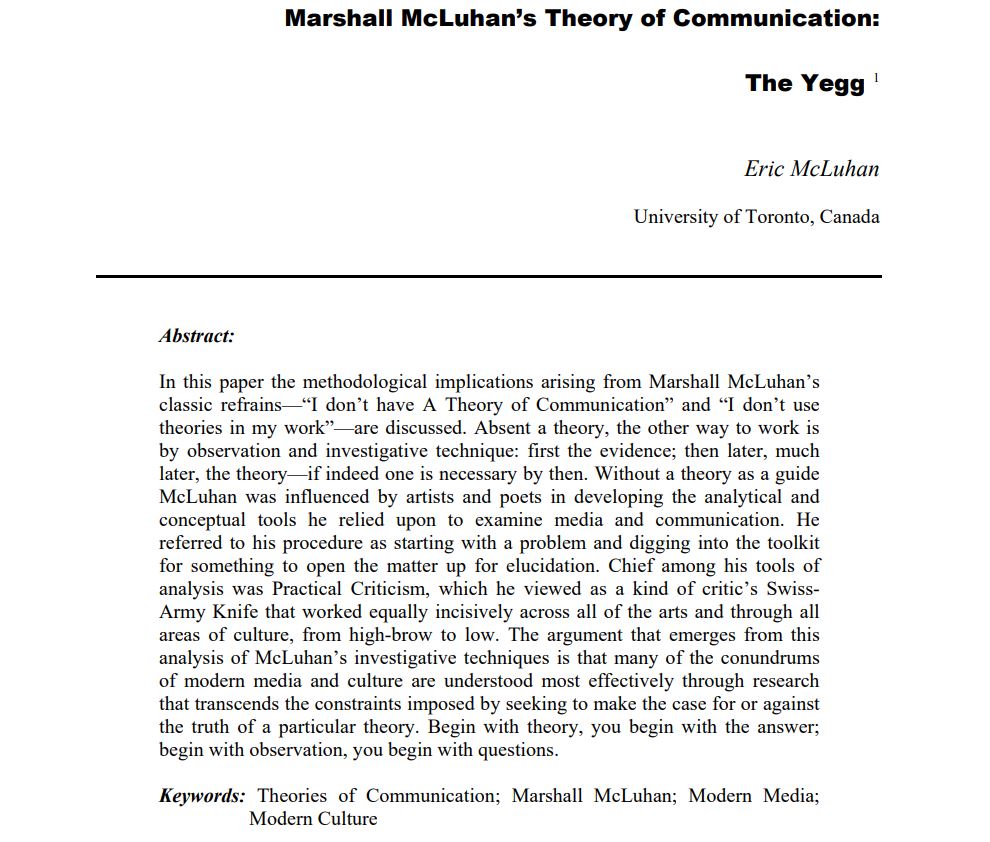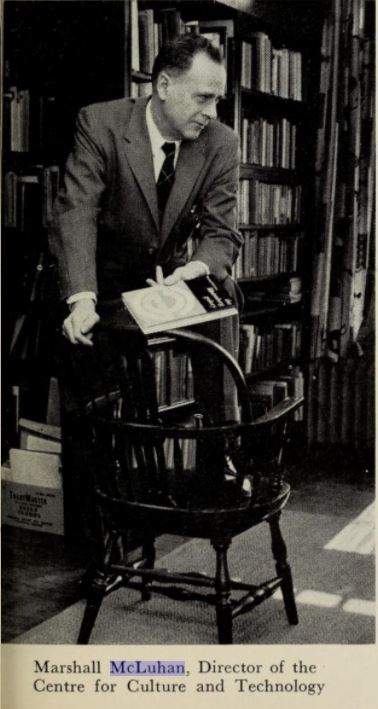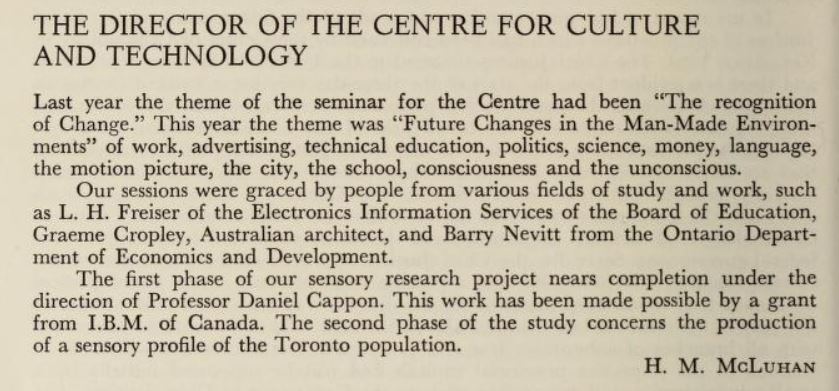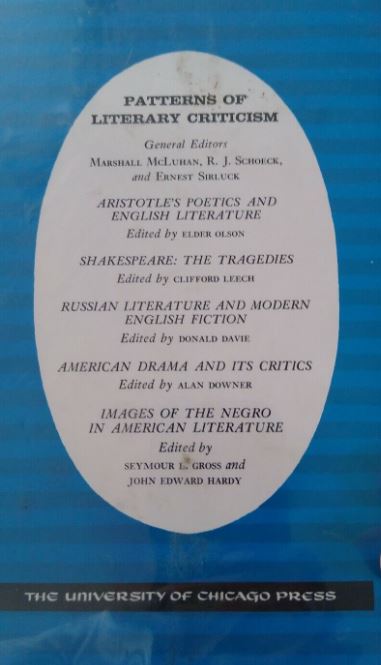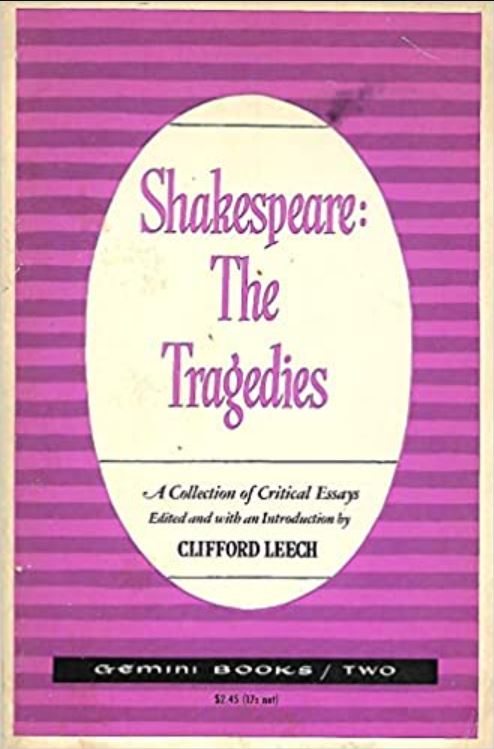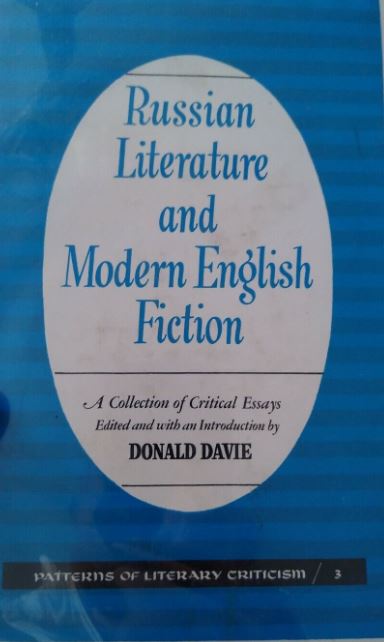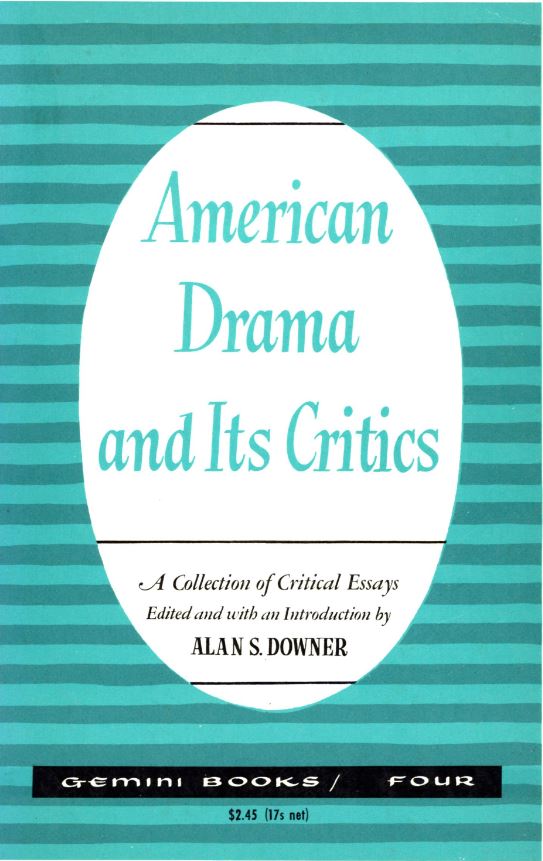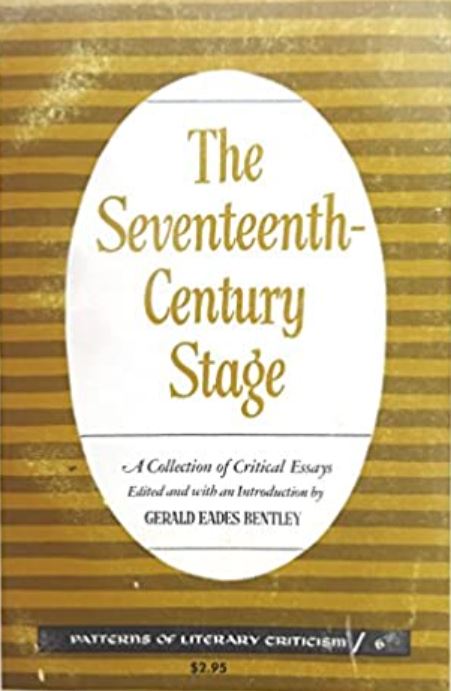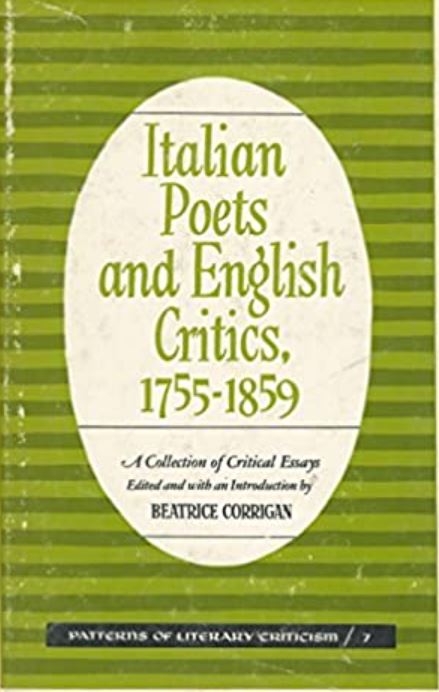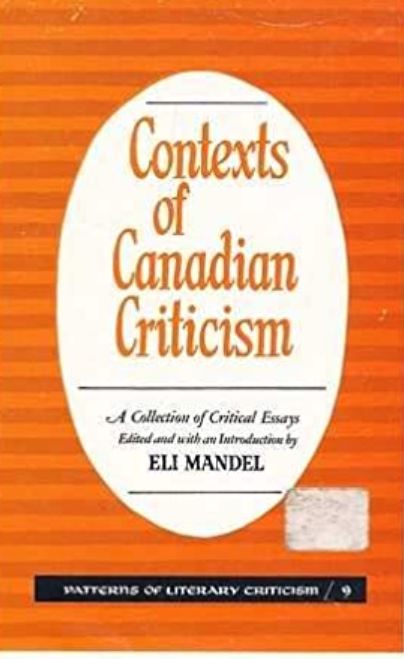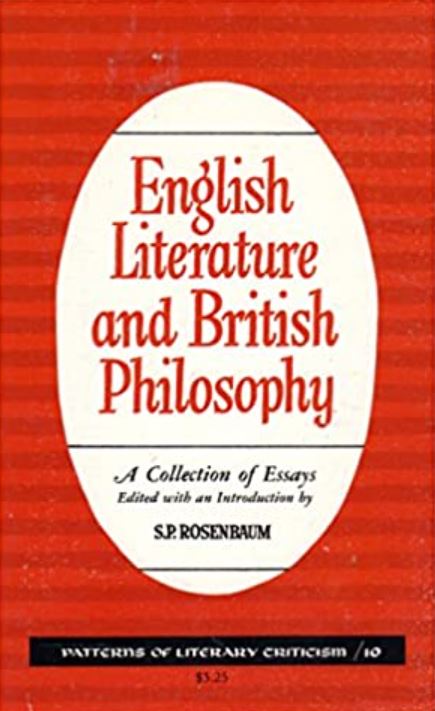McLuhan’s talk, ‘A Garbage Apocalypse’, given at a 1970 conference on art criticism in Ottawa is available online in the Critique d’Art archives. Here it is in text and with added emphasis:
*********************
A Garbage Apocalypse
We live in an age of innovation when we are surrounded by so many scrapped cultures that ruins, junk, and garbage have become a new kind of environment. Every innovation scraps the preceding environments created by preceding innovations and this prepares the ground for new cultural figures to emerge. The Greeks abstracted phusis as a visual figure from the ground of the surrounding barbaric cultures, sunk in their non-visual existential modes.
Thanks to the new art of phonetic writing, the Greeks were able to establish a new order of classified and conceptualized art structures which gradually became consolidated as Nature.
To the Greeks, phusis or “Nature” was abstracted from the huge existential mass of oral culture and magical practises by which the pre-Socratic world had established its relations with the ground of existence. The pre-platonic world was auditory, tactile, and kinetic, anything but visual in its patterns of order. The entelechies of man and society in the pre-Socratic world were resonant and auditory rather than visually classified. With the new phonetic writing, with its drastic separation of sign and semantics, the Greeks were able to make a complete divorce between the old pre-literate cultures and their own Euclidean order. Euclid himself had consolidated the new abstract, visual space, retaining as little as possible of the old kinetic aspects of land measurement in the organization of his formal structures. It was not, however, until printing that geometers were able to reduce the kinetic character of geometry to an absolute visual minimum. (See Art and Geometry by Wm. Ivins Jr.)
To the Greek of this early time it seemed plain enough that he was creating an order of phusis, or physics, or “Nature” from the huge midden-heap of confused barbaric cultures. What eventually emerged from this “garbage” of destroyed cultures was a highly selective abstraction of classified conformities and patterns which the Greeks called phusis, or physics, and which gradually became familiarized in the Western world as “Nature.”
In the age of non-Euclidean geometries (later 19th century and since), it is quite easy to see that the Greeks had separated out visual space from the many other kinds of space in setting up geometry. Visual space has the unique properties of uniformity, continuity and connectedness. These properties do not belong to the kinetic or auditory or tactile spaces. Only phonetically literate man has ever sufficiently separated out the visual sense from the perplex of all the other senses in order to create a merely visual order in art and knowledge. Pre-literate man lives primarily in the audile-tactile world of the resonant interval which is now familiar to us from the new quantum mechanics. (See The Nature of the Chemical Bond by Linus Pauling.)
The world of play, celebrated in the study Homo Ludens by J Huizinga, is a world of the resonating interval such as we experience in the relation between wheel and axle. It is play rather than connection or logic that makes possible both wheel and axle. Logic is known only to the visual man who looks for connections rather than for play and metamorphosis. The artist, however, must always prefer the world of play and metamorphosis to the world of visual continuity and logical connection.
The Greeks, having created phusis from the huge midden-heap of surrounding barbaric cultures, proceeded to study the entelechies of their newly invented “Nature.” The processes within the structure of classified data and which they had included in their rigorous selections from the existential world outside themselves, they studied as vortices of power which they called energeia, or entelechy. Somewhat strangely, they excluded from this entelechizing process of observation and formulation all those forms of energy generated by the extension of man’s own being. Even language, itself the divine Logos as resonant in human speech, was given scant attention as a form of magical energy. The pre-Socratics seem to have been much more aware of the entelechies of language than the literate Greeks. It was surely writing itself that dictated this preference for the visual rather than the auditory manifestations of the word. Civilization has been reared upon techniques that suppressed the resonant and the magical forms of language and other technologies.
May it not have been their Greek satisfaction with the massive artefact of their phusis that made them feel exempt from the task of discerning the entelechies of human technologies? How else is it possible to account for this huge hiatus in Western philosophy and science? Oriental, and also pre-literate societies around the world have always felt awe in the presence of the entelechies swarming from and around human artefacts. Only visual man has stood aloof and scornful of all the magical powers exerted upon us by our own ingeneous innovations, whether weapons, clothing, utensils, or vehicles.
Today in the age of Sputnik when the planet itself has been enclosed in a human artefact, Nature, whether the nature of Euclid, Plato and the Greeks, or that of Newton and Adam Smith and Marx, has been scrapped. The planet, enclosed in a human artefact, has become itself a vast garbage apocalypse. The instant environment of electric information made possible by the “wired” planet, has restored the pre-literate ecology of the pre-Socratics to the Western world. The Orient never did abandon the non-visual modes of magic and ecology. It is only visual, logical, and abstract Western man who has preferred to have “a place for everything”, and everything in it’s place”, and “one thing at a time.” Such an order, and the processes that are compatible with such an order, can scarcely co-exist with the electric all-at-once patterns of awareness.
It was in the mid nineteenth century that poets and artists began to explore the entelechies of human arts and technologies. Edgar Allan Poe and Baudelaire and Mallarmé were foremost among those who began a new approach to the arts and artefacts of man. They proposed the strategy of studying not causes, but effects. With Poe this meant the study of every kind of process, but especially the artistic and cognitive processes. In the art of poetic making, Poe recognized that order was related to effect and considered it necessary to start with effects rather than causes, with perceptions rather than concepts. This had been the hiatus of the preceding centuries since the Greeks. Concepts and classifications had been the supreme mode of studying Nature. Systems of thought and philosophy stood out as figures against the ground of “Nature.” Today when “Nature” has simply been scrapped by electric technology, it is obvious that we have returned from the ground of Nature to the ground of existence itself. Existence is enormously greater than anything included in any philosophical system, since a system, as such, must be exclusive rather than inclusive.
For most people the return from the Greco-Roman visual order of Nature to the audile-tactile resonance of existence, is nothing less than a garbage apocalypse.
Question from Laurent Lamy: You said something about American Telephone and Telegraph. I wonder if we let the AT&T people do the news, and listen to the telephone and telegraph all the time, that might be more fun.
McLuhan: I am not sure what is involved there, in your mind. I am not sure what you mean by AT&T doing the news. They do it now. What do you want them to do? It is their technology that does it now. They are the ones who have wired the planet.
Incidentally, when you have wired the planet for this type of service it becomes mandatory to make sure that your wire installations remain unviolated by other political forces so that the wires have to remain clear. You could say that the United States, or whatever powers have undertaken this wiring, feel obliged to keep other people out of the way of their wiring system. This, I think, may help to account for the strange contradictory policies, so that what is really a technological precaution for protecting a huge wiring system, seems utterly inconsistent with the old hardware, weaponry, goals, territorial and other objectives from a previous age. I think the United States is probably caught completely between these technologies, and has not a clue what to do with the new in terms of the old anymore than our postal department knows what to do with the old hardware technology in relation to the new software.
What would happen, for example, if video phones were to come in. You would scrap the old telephone. If you brought in video phone you would scrap the person-to-person character of the telephone, and you would bring in everybody. The video phone would not permit a person-to-person call but everybody would be there. Here comes everybody instead of just the person you want to speak to. The telephone is famous for this person-to-person character. It enabled people to speak person-to-person for the first time in the world. You were there, they are here, whereas the old letter, which you would send to correspondents, did not permit you or they to transfer your position. You stayed in your corner and the sender stayed in his. The telephone enables you to be there and the person to whom you are speaking to be with you. Now with video phone. the person to-person character of telephone would disappear instantly. The whole environment would be there, the whole surrounding in which you were speaking would be there, and all the people in the room with you would be there, and the person at the other end would be with you. You can imagine the chaos that the telephone system would undergo with video phone. The telephone people are terrified of the video phone possibility, just as the educational establishment is paralyzed by cassette ideas.
It is too much to make this transition from classrooms in which people stay in one position to a world in which everybody can be everywhere, instantly and simultaneously. Nobody has ever tried to devise a curriculum where everybody can be everywhere. The answer, by the way, to those types of problems is that the answer is already here. In fact, the curriculum that takes over at that point is that the environment itself becomes educator as it was for primitive man, the hunter.
The primitive hunter used the environment itself as a trainer of perception, not concepts.
That is why under electric conditions concepts become useless. For example, the man who is up against the telephone problem or the mail strike problem, is up against a technological problem that has nothing to do with unions. Nothing to do with salaries. The educator who is up against an electric environment suddenly discovers that concepts are no use. He has to use percepts instead. The man who is trying to solve the video phone problem will find concepts, ideas, of just no use at all. He has to know what is happening and what is going to happen.
In the environment of the hunter of the new Paleolithic age in which we live, percepts are prior. Concepts are pushed into the background again, as nuisance. in the way of percepts. That is what I meant earlier when I said that we had moved into the age of the hunter again. The hunter is a man who cannot afford concepts, he has to use his senses. He has to perceive his world immediately and directly as a survival kit.
I do not think there are very many concepts that have the slightest relevance under these new instant conditions. The concepts that were built up laboriously over centuries of literacy, all the concepts turn out to be classifications. Filing Systems for information, and they are of no use in an age of instant retrieval and instant exposure to everybody.
I do not know whether this has any relevance to the question about AT&T, but AT&T has wired the world, they have already done the job referred to superbly and perhaps irresponsibly in the sense that they are not answerable to anybody. Nobody asked them to do it. People have not taken enough interest in what is going on to know what is involved and what was done. Those sounds which we just heard, I do not know whence they come, but they remind me of the primitive sort of animal cries. When you are at a loss for words you tend to resort to gestures, and grunts, and ‘like I mean, man’. Have you not noticed that language is disappearing very rapidly? In the new electric age the Marcel Marceaus have it all over us. We have returned to the age of mime, gesture, the verbal universe has been scrapped too.
It is part of the junk heap, witness Finnegans Wake. Finnegan is one of the great testimonies to the scrapping of the languages of the world, tossing them onto a junk heap as new resource material for poets. All of the languages of the world are now available simultaneously as poetic resource. We know more about languages than ever, but we have not decided what to make of them. Finnegan takes language as itself, material to be manipulated into art, possessing all the clues as to the inner structures of our own beings and also the inner history of our psyche. Finnegan is a new electronic use of language as gesture, language as resonant interval, pun. Joyce uses the pun to release the enormous stored perceptions of language. Every word ever introduced into any language represents millions of perceptions of millions of people, over long periods of time. Language as codified experience of many, many generations can be released only by puns. The pun is a kind of interface or interval which enables the stored perception of words to be released. Literary people who are accustomed to imposing semantic definitions on words are baffled by this use of the pun as a trigger for releasing experience in language. All language resonates with total perception of the race. The artist is a person who seeks to arrange it in forms which will release that power.
In our time advertising slogan-makers and label makers have spent more energy trying to release the magical powers of language than any other group in the community. They are, to our shame, the most active artists in the verbal field that we have. The rock bands do not make very many syntactical statements. They, too, are mainly concerned with rubbing words together to see what they are made of. They do not have much semantic or intellectual curiosity about them at all. Somatic rather than semantic, is the new thing, where it is at.
I am very interested in the phrase “where it is at”. It is a new dimension of perception in English because “it” does not refer to anybody or anything. It means everybody and everything, and “at” is a very strange word indeed. There is a kind of consensus and a consensuality, everybody and all our senses simultaneously concentrated in a single moment of awareness in that phrase. There is a new – it is not avant garde at all – there is a new feeling of need to know where it is at– and I would toss that one to Mr. Rosenberg.
I would suggest that ‘where it is at’ is a very much more complex and difficult approach to human awareness than anything that the artist had ever thought of in the avant garde period.
It certainly is not a task for a private artist to tackle, to discover where it is at.
Desvergnes: Vous avez dit un jour qu’un de vos amis, ingénieur du son newyorkais a rapporté cette remarque d’un policier de New York, qui lui disait, “Lorsque vous avez des problèmes, n’apellez pas à l’aide mais apellez au feu parce que l’aide est une chose froide qui ne donne pas envie de s’en mêler, alors que le feu est chaud, en donnant l’impression qu’on peut faire quelque chose très vite”. Je veux vous poser la question, dans cette idée de critique d’art et de ‘hunter’ et de ‘hunted’ la question de savoir si le critique d’art va être, tandis que vous vous êtes créé une situation prophète un peu dans le domaine, avec tous les alias que ça comporte, est-ce que vous croyez que le critique d’art va être du froid ou du feu, de l’aide ou du feu, “of the outer trip or the inner trip?”
McLuhan: A critic after all, like anybody else, thinks of himself as speaking to somebody. Montaigne, when the book was new, said there was nobody to speak to. It is very interesting to go back to the 1500s and see the strange efforts that people made in that period to find a public. Now, the medieval writers had tiny little publics, maybe a few dozen people at most, because the manuscript could not be read very quickly and it could not be read by very many people. But with print came the possibility at least of hundreds of readers and then thousands, and so on. There was nobody who knew how to write for the printing press for a long time. Montaigne thought of himself as putting messages in bottles and throwing them in the ocean. Montaigne thought of the book as a message in a bottle, he did not believe that it could actually reach anybody, except by chance.
Think of what your problem would be if in some African community you were the only person who could read and write and you had a great masterpiece in mind and you wrote it and got it published, in English or in your own African dialect. Who would it be for? Actually, you cannot even begin to write until you have in mind a public. The public is a producer, not a consumer. For the painter, too, and for the art critic, the public is a producer, not a consumer. Today we are in a very good position to realize that. We have scrapped all the publics and the consumers have all become producers by virtue of Gallup polls and various investigatory committees. The whole world audience is now being used as a resource for research and this is one function of the computer, to store data about everybody, and to make it available to anybody, for a small fee.
When you [are] asked about the art critic then, you have to say, who was the public for whom the painter worked, and then again, in a very subsidiary sense, who was the public for whom those art critics wrote about those painters? Mr. Rosenberg can answer those questions very well, having worked in that field for a long time. Notice that the New Yorker and Esquire, for which he wrote, were fun magazines, and that light-hearted magazines of that sort should be the vehicles of serious art criticism is itself rather strange. Where else would you print serious art criticism except in a comic magazine? This is one of the hang-ups of the art critic.
When you asked the question about the art critic, who is the art critic for the rock bands today, who are the people who do the evaluating and the standard making for the big bands?
This is worth looking into because what function these bands perform for their audiences, artistically, is certainly an important question. They do a profound amount of educating of the young. Their credentials as educators have never been examined except by — whom? I do not know. I am not sure that the art critic has a future in that kind of world. On the other hand, notice that you have a very high level of virtuosity, of discrimination and awareness among the consumers of rock music. The audiences are very critical. They are many of them participants. This is a new situation.
It is like the old Homeric rhapsodists who were the professional performers of the poems, the harpists, the bards, their audiences were participants too, and knew every trick in the game.
I think art criticism, in the sense of high standards of awareness of what is going on, probably is going to go up, up, up, in the pop art world but just what that might portend, I am not sure.
Mrs Weelen: Mr. McLuhan, earlier in your talk you said that the camera is an eye turned towards the world and that the television eye can be compared to the eye of the blind man turned in an inner quest. I wonder if you would mind elaborating on that because, of course, at first sight [at first sight!] it seems very contradictory since the journey made inwardly by the blind man would seem to be rather the opposite of what takes place with a spectator watching television. I would like to ask if you can elaborate on that.
McLuhan: It is not an easy matter. I referred already to this book of Lusseyran. Jacques Lusseyran wrote a book called And There Was Light. It is in English and was published about 1964, I think. Having gone blind he became intensely conscious of the change in his sensory life and it is one of the best studies of the inner trip undergone by a blind man that I have ever read. In the ancient world, the seer, the one who knew, was portrayed as a blind person and he [ Lusseyran] explains that sort of thing very well in this book. He also explains the enormous stepping up of the senses of touch and hearing resulting from blindness. So, in a sense, in the television age of the inner trip, the other senses have become enormously more keen. The visual sense has gone down but the other senses have come up into a higher [relative intensity].
Weelen: You mean the watcher? The senses of the watcher of the television?
McLuhan: Yes. His touch and taste and smell and hearing have got much more sensitive than they had been before. The watcher of television, of course is mostly watching old movies but the fact is that they are translated into a television form of experience by the medium. That is, a movie put on television is not a movie anymore, it is television, and television goes into you. It is like a drug. It is an immediate injection into your system, your nervous system. That is not a figure of speech. It is literally an injection into your nervous system and the Krugman experiments revealed this.
Weelen: Yes. But surely all thought process is stopped there, whereas the blind man presumably…
McLuhan: Thought is again something subject to amazing varieties depending upon cultural set-ups. The idea that the body itself might be turned into a means of intellectual awareness is now an everyday fact under electric conditions. Now again, it is very difficult to evaluate these things but it is very different from the sort of thinking that went on in the age of concepts. I can only suggest that that might be one place at which to begin to study it, study the nature of preconceptual thought, you might go back to the pre-Socratics, or preliterate thinkers, and see how they encountered their world. But we are post-literate and more primitive than the pre-Socratics ever dreamed of being.
